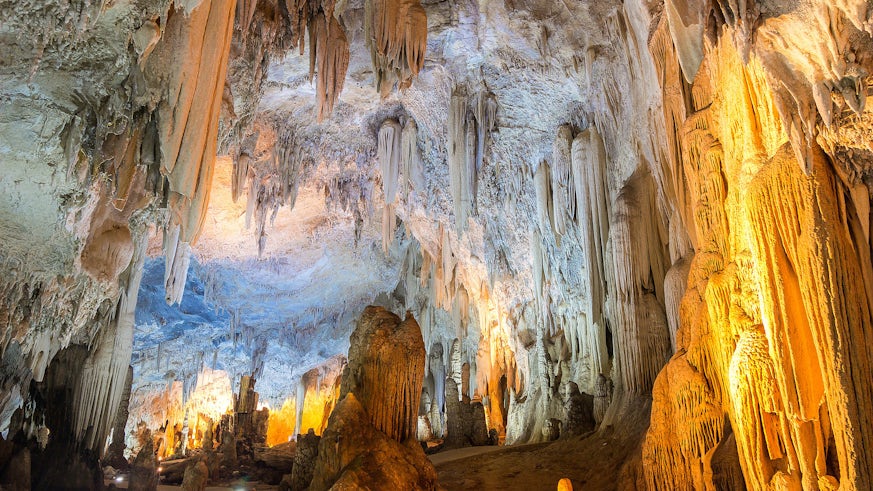Cave droplets provide window into past climates
8 July 2019

The chemistry of drip waters that form stalagmites and stalactites in caves around the world have given researchers an insight into our past climate.
In the first ever global analysis of cave drip water, an international team, led by Andy Baker at UNSW Australia and including scientists from Cardiff University, have explored how stalagmites and stalactites can show how groundwater resources have recharged in the past.
Groundwater, found underground in the cracks and pore spaces in rocks and sediments, is the largest source of usable freshwater in the world, and is relied on by more than two billion people as a source of drinking and irrigation water.
Groundwater resources are replenished predominantly through rainfall in a process known as recharge. At the same time, water exits or discharges from groundwater resources into lakes, streams and oceans to maintain an overall balance.
If there is a change in recharge, for example due to a reduction in rainfall as a result of climate change, the levels of water in the ground will begin to change until a new balance is achieved.
However, questions remain about how groundwater will be specifically impacted by future climate change, and where and when any changes will take place.
Though it has historically been difficult to determine past groundwater changes, scientists have recently made progress using new methods involving stalactites and stalagmites.
The oxygen isotope composition of stalagmites and stalactites found in caves can hold valuable clues about our past climate.
This oxygen comes from the water dripping from the stalactites and onto the stalagmites. The drip water originally comes from rainfall, providing a direct link to the surface climate.
Understanding the extent to which the oxygen isotopic composition of drip water is related to rainfall is a fundamental research question which will unlock the full climate potential of stalagmites and stalactites.
In their study, published in Nature Communications, the team explored 163 sites from 39 caves on five continents, comparing the oxygen isotope composition of drip water to that of rainfall and groundwater recharge.
In cool climates, cave drip water oxygen isotope composition was similar to that of rainfall, meaning that stalagmite oxygen isotopes might best preserve past rainfall in these regions.
In warmer climates, and strongly seasonal climates, cave drip water oxygen isotope composition was similar to that of modelled groundwater recharge, meaning the records are more likely to preserve a record of past groundwater recharge.
Dr Mark Cuthbert, from Cardiff University’s School of Earth and Environmental Sciences, and co-author of the study, said: “These results are particularly important for interpreting records of past groundwater recharge from stalagmites in dryland regions. This can help us understand the relationship between climate variability and water resources in naturally water scarce parts of the world and inform water management strategies in the context of climate change.”


